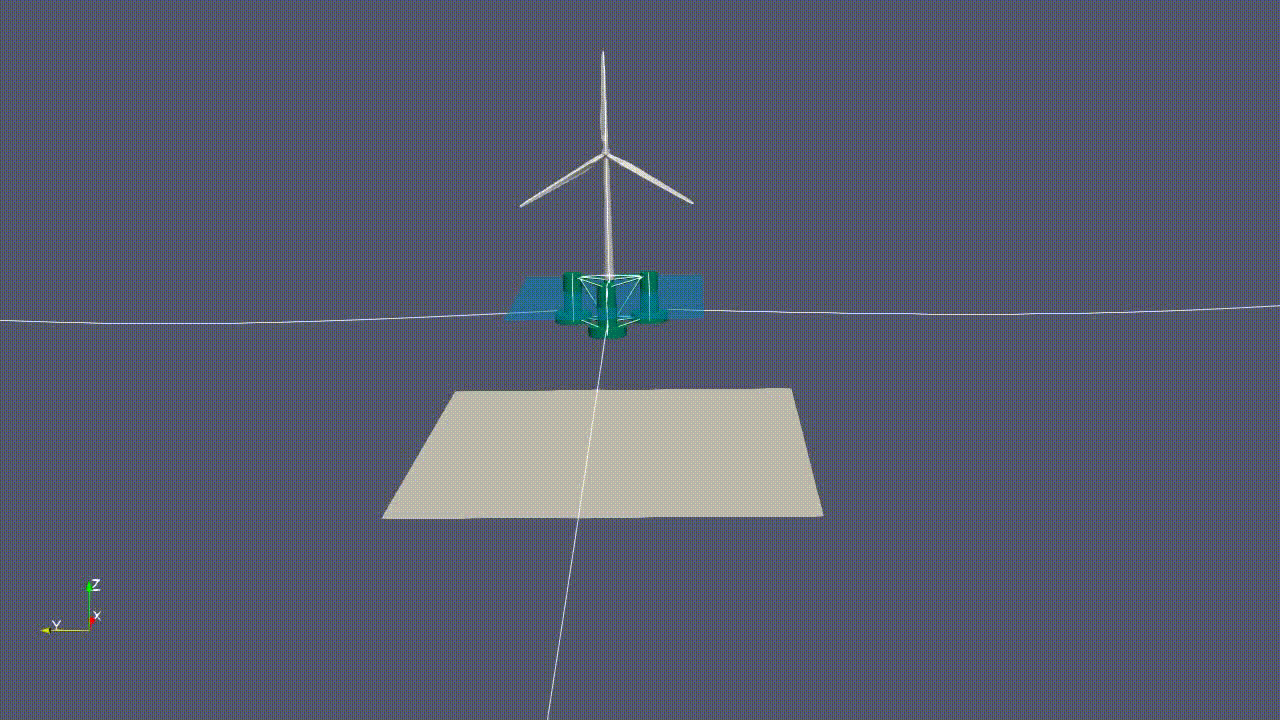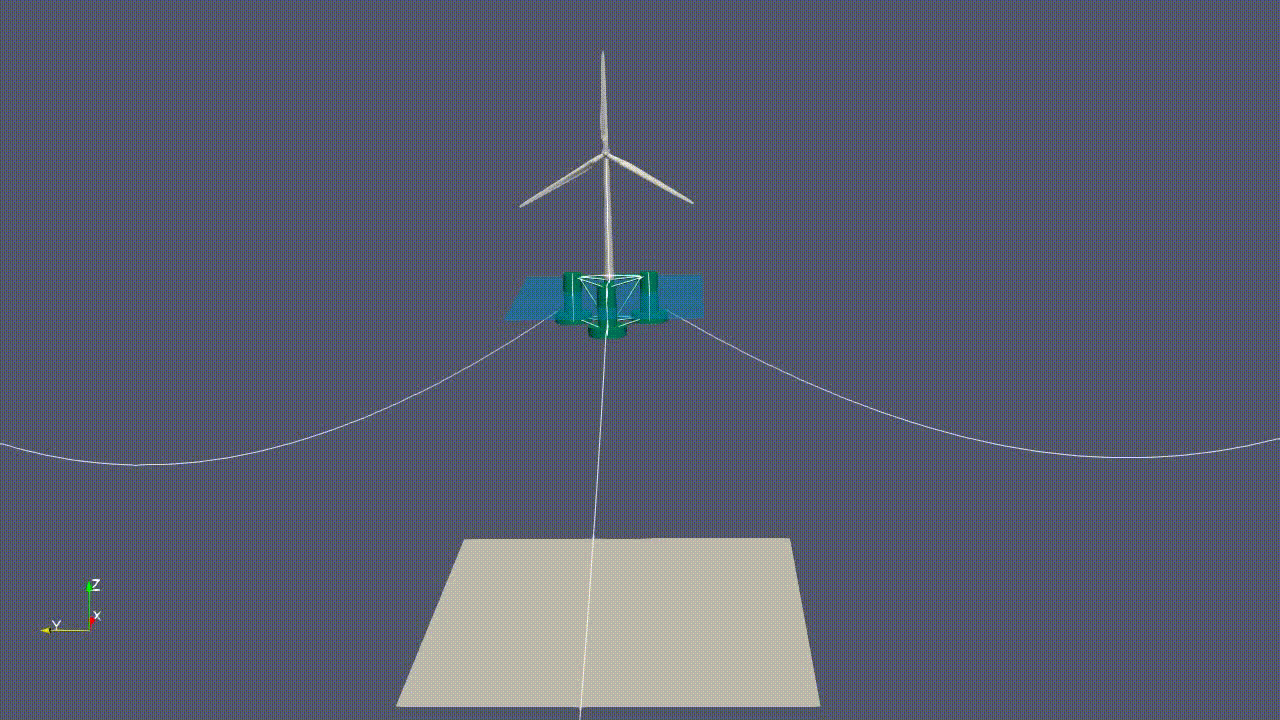Downloading The Results#
We have successfully executed 50 simulations in parallel, each corresponding to a different water depth variation. This demonstrates the power of leveraging cloud resources to scale up computational experiments efficiently. Now, it’s time to retrieve all the results and analyze the data to extract meaningful insights from our simulations.
Simulation with water depth of 100 |
Simulation with water depth of 200 |
|---|---|
|
|
Project summary and download outputs#
Using the Inductiva package, obtaining a project summary and downloading all output files is straightforward. The following Python snippet demonstrates how to achieve this:
import inductiva
openfast_project = inductiva.projects.Project(
name="Openfast_WavesWN")
print(openfast_project)
openfast_project.download_outputs()
Executing print(openfast_project) provides a summary with key project details:
Project 'Openfast_WavesWN' with 50 tasks (id=3dde0355-0189-4634-83eb-8e177e873bf3).
Tasks status:
success: 50
Total number of output files: 4150
Total size of output: 1.63 GB
Project duration: 7 minutes and 4 seconds
Project total simulated time: 28 minutes and 26 seconds
Estimated project cost: 0.0059 US$
Key Takeaways#
Efficiency Gains: Running all 50 simulations in parallel took just 7 minutes and 4 seconds, compared to 28 minutes and 26 seconds if executed sequentially (~34.12 seconds per simulation).
Comprehensive Output: The simulations generated 4,150 files with a total size of 1.63 GB.
Cost-Effectiveness: The entire project execution cost only $0.0059, showcasing the affordability of leveraging cloud computing for large-scale simulations.
By efficiently managing computational resources, we achieve faster results while keeping costs remarkably low.
Lastly, running the openfast_project.download_outputs() will create a folder
called inductiva_output/Openfast_WavesWN with one folder for each simulation,
as seen here:
total 0
drwxr-xr-x 3 paulobarbosa staff 96 Feb 20 15:11 1d61519z29drg2jp4nhknauoo
drwxr-xr-x 3 paulobarbosa staff 96 Feb 20 15:11 3qoor8iooxtmmm5dozs0o40px
drwxr-xr-x 3 paulobarbosa staff 96 Feb 20 15:11 4jho5mrt1dvr1c4wcsq9hje2z
...
drwxr-xr-x 3 paulobarbosa staff 96 Feb 20 15:11 tif6v2qugbkcjcum2hna5ttow
drwxr-xr-x 3 paulobarbosa staff 96 Feb 20 15:11 tyqb7rnsyzi94wqgcn58cc2y6
drwxr-xr-x 3 paulobarbosa staff 96 Feb 20 15:11 u3my9tc6deh72xan9j7kn0syj
In conclusion, leveraging cloud computing for large-scale simulations not only enhances efficiency but also significantly reduces computational time and costs. By running 50 simulations in parallel, we managed to work around one of OpenFAST limitations, witch is the fact that it does not scale with multiples CPU cores.
Inductiva makes it possible and convenient to run hundreds thousands of simulations. For example, you could now change the code for:
Covering a design space with many more parameters;
Adding a black box optimizer, such as Vizier, on top of the loop and adding a evaluation function to analyze the result of each simulation that finishes, and perform an intelligent exploration of the design space.
Building a really large dataset of example simulations to later train a surrogate model;
Inductiva can streamline research, making high-performance computing more accessible and cost-effective.

